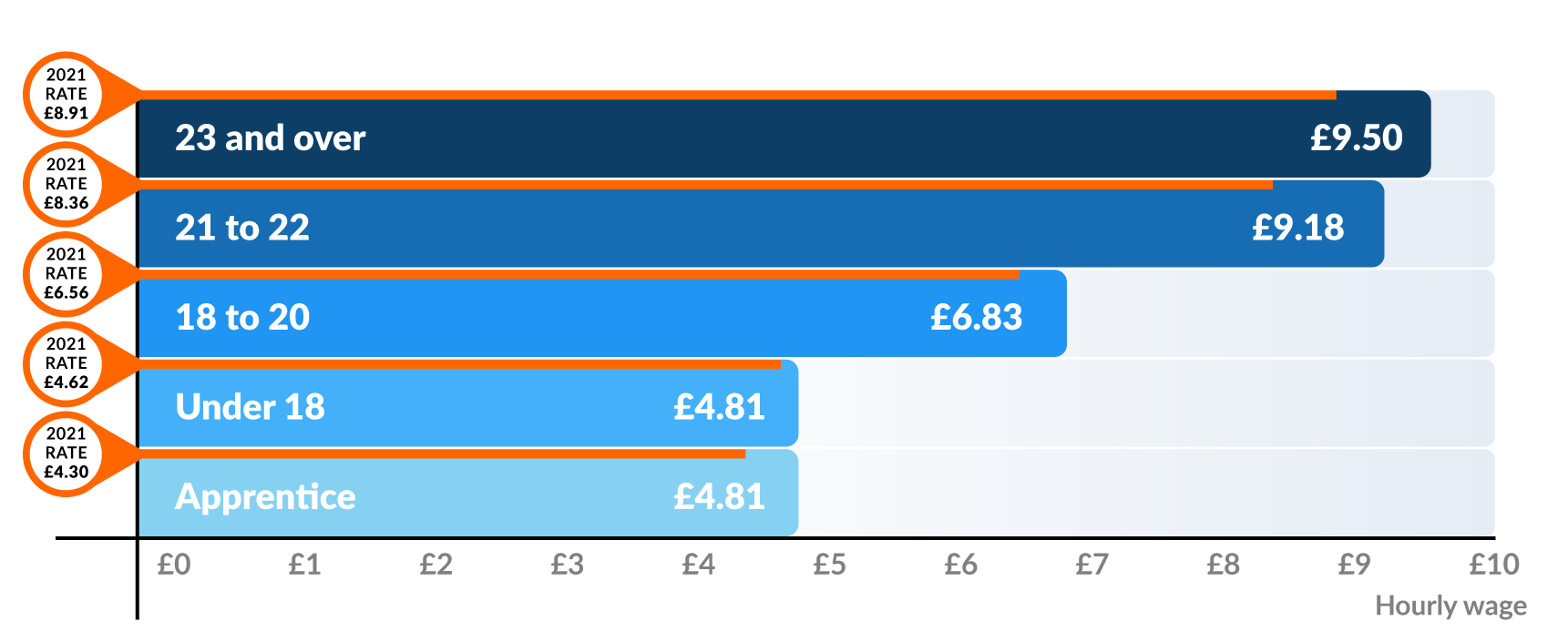The secrets to dealing with a passive aggressive team member
Managing a successful team involves getting the best out of different personalities and helping...
Increases in both the 2022 National Minimum Wage (NMW) and National Living Wage (NLW) take place on April 1st (although when it kicks in for your pay may be later in the month) . Here's a short explanation of how these changes affect both employers and employees. We start with a comparison between NMW and NLW.
Here's a quick summary of the differences between NMW, NLW and when apprentice rates are allowed:
All UK workers under age 23 are entitled to the National Minimum Wage if they are:
All UK workers are entitled to the National Living Wage if they are:
To clarify the apprenticeship qualifications: apprentices receive the apprentice rate only if they are:
Employers that don't pay at least the minimum rate must pay back what's owed to their employees and suffer a hefty government fine. This could be up to 200% of what's owed to their employees up to £20,000 per employee. They could also be featured in the annual list of shame.
So, it's essential that employers make sure they have accurately calculated and adjusted for this change before it takes effect. This includes making sure all work-related activities are included that count as working time. That means everything from employee training at work and traveling between appointments to shift overruns and working lunches.
Minimum wages are set as hourly rates but apply to workers even if they're not paid by the hour. If, as an employer, you pay annually, monthly or for piece work, you will need to work out the equivalent hourly rate to see if you’re meeting legal minimums. Workers can do the same to check they are receiving at least the minimum. Here's how to calculate hourly wage from an annual salary:
(Annual salary ÷ 52) ÷ hours worked per week = hourly rate
EXAMPLE: Supposing the annual salary you're paying or being paid is the UK average salary for 2022: £24,600 and work hours for that salary are 37.5 hours per week. Here’s how you would calculate the hourly wage:
Workers can also check they are being paid the NMW and NLW, or if their employer owes them from a previous year, by using the government's online calculator.
The table below shows the increases for all age ranges for 2022. You can also find the details on the government's Minimum Wage Rates for 2022 compiled by the Low Pay Commission.

ACAS provides a helpline available Monday - Friday from 8 am to 6 pm for anyone needing help with minimum wage issues as an employer or employee.
Managing a successful team involves getting the best out of different personalities and helping...
Chances are, you’re one of the 364 million people who have a profile on the business networking...